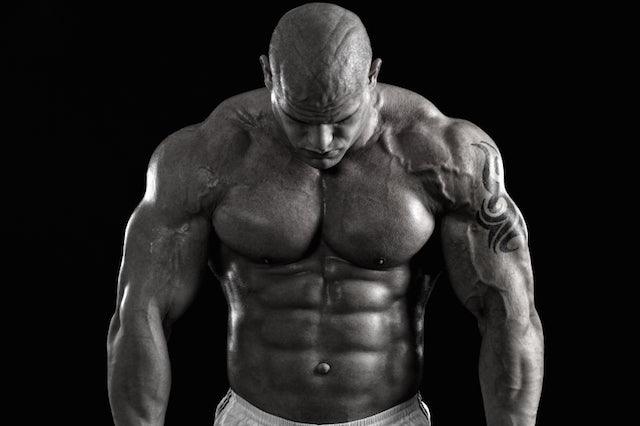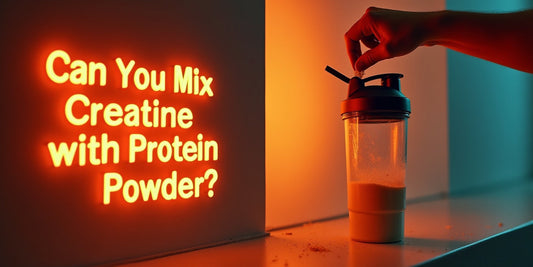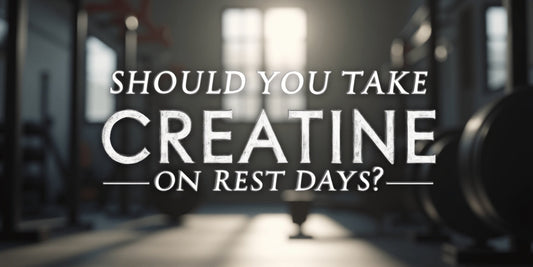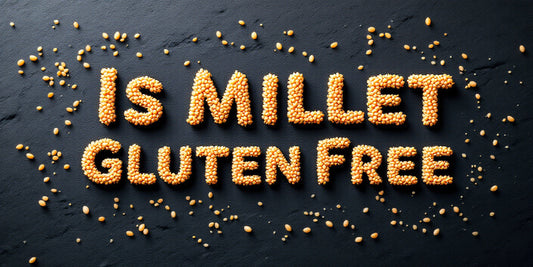

Getting Shredded 101: Beginner's Diet Plan
Table of Contents
| Getting Shredded 101: Beginner’s Diet Plan |
If you’ve just decided to make the commitment to start working on improving your health, fitness, and body composition, it’s vital that you do some research first so that you can learn the most effective way to go about things. Losing fat is actually pretty simple for the average person, however with the amount of misinformation out there is astounding. Low carb, low fat, Mediterranean diet, Paleo diet ,ect. With all the hundreds of different diet plans to choose from out there, it can be overwhelming to try and figure out which is going to be the best option for you. So the trick to successful fat loss is to design an approach that doesn’t scare your body so it will willingly give up its body fat stores for energy. This is done through a more moderate calorie intake not a starvation one.
There is approximately 3500 calories in 1 pound of fat. What that means is, for every 3500 extra calories that you consume that your body doesn’t burn, you will GAIN 1 pound of fat. At the same time, it also means that for every 3500 extra calories that your body does burn, you will lost 1 pound of fat. And, since there is about 3500 calories in 1 pound of fat, doing this will result in 1 pound of fat being lost per week. And, since the ideal weight loss rate is 1-2 pounds per week, this would put you right within range. Add some exercise in as well, and it will bring you closer to the higher end of that range. This is also why you should never reduce you calorie intake too much, too soon. Making small, gradual adjustments to your calorie intake is the safest way to do it and the way it should always be done.
Set your Weight Loss Goal
 Setting weight loss goals is probably one of the more difficult steps of a weight loss program. How much do you need to lose? We often choose a number based on what we used to weigh or, perhaps, what we’ve always wanted to weigh, but is that the right approach? If you’re losing weight for your health, your goal might be more modest, say 5-10% of your current weight. Answer these questions for yourself by learning how to set reachable weight loss goals. This goal could be to lose 30 lbs. or it could be to see your abs. Whether your goal is to lose a certain number of pounds or to just achieve a certain look you will need to set a reasonable time frame to achieve this. If you do not set a time frame there will be no sense of urgency when trying to make progress.
Setting weight loss goals is probably one of the more difficult steps of a weight loss program. How much do you need to lose? We often choose a number based on what we used to weigh or, perhaps, what we’ve always wanted to weigh, but is that the right approach? If you’re losing weight for your health, your goal might be more modest, say 5-10% of your current weight. Answer these questions for yourself by learning how to set reachable weight loss goals. This goal could be to lose 30 lbs. or it could be to see your abs. Whether your goal is to lose a certain number of pounds or to just achieve a certain look you will need to set a reasonable time frame to achieve this. If you do not set a time frame there will be no sense of urgency when trying to make progress.
Calculate Your BMR
Your BMR (Basal Metabolic Rate) is an estimate of how many calories your body burns at rest. It represents the minimum amount of energy needed to keep your body functioning, including breathing and keeping your heart beating. Your BMR uses up about two-thirds of your daily calories. Your caloric intake to lose, maintain, or gain weight will be based on your BMR, but will not be the same figure.
Age, height, weight, and gender determine a person’s BMR, also known as basal energy expenditure (BEE). There are multiple formulas used to calculate BMR due to different schools of thought in the health and fitness community. Our calculator uses the Harris-Benedict equation, which works as follows:
If you’re a man, your BMR is equal to: 65 + (6.2 x weight in pounds) + (12.7 x height in inches) – (6.8 x age in years)
| Multiple the result by |
| • 1.2, if doing sitting work |
|
(bodyweight x 10 + 900) x 1.2 |
| • 1.4 if characterised by moderate physical activity |
|
(bodyweight x 10 + 900) x 1.4 |
| • 1.8 if doing heavy physical activity |
|
(bodyweight x 10 + 900) x 1.4 |
If you’re a woman, your BMR is equal to: 655 + (4.3 x weight in pounds) + (4.3 x height in inches) – (4.7 x age in years)
| Multiple the result by |
| • 1.2, if doing sitting work |
|
(bodyweight x 10 + 700) x 1.2 |
| • 1.4 if characterised by moderate physical activity |
|
(bodyweight x 10 + 700) x 1.4 |
| • 1.8 if doing heavy physical activity |
|
(bodyweight x 10 + 700) x 1.4 |
Knowing your BMR can help you create a more effective strategy for weight loss, allowing you to better keep your calorie count on track and better understand the effect exercise will have on your waistline.
 Another important factor to bear in mind is that the optimal rate of losing weight is half a kilo per week. If you aim for faster results, your metabolism will slow down way too much, and you will be risking losing muscle mass besides body fat. In order to lose half a kilo of fat, your weekly calorie intake should be below the weekly maintenance calorie intake level by 3500. This means that you should consume the maintenance calorie level minus 500 on a daily basis. In the previous example, the daily energy intake of the mentioned male should be adjusted to 1500 calories a day. If the diet is paired with an increase in physical activity, the maintaining calorie intake should be increased accordingly, meaning that it would be somewhat more than 1500 calories to achieve optimal weight loss.Now that you understand your Metabolic and Basal Metabolic Rate, you can achieve weight loss thru several methods.
Another important factor to bear in mind is that the optimal rate of losing weight is half a kilo per week. If you aim for faster results, your metabolism will slow down way too much, and you will be risking losing muscle mass besides body fat. In order to lose half a kilo of fat, your weekly calorie intake should be below the weekly maintenance calorie intake level by 3500. This means that you should consume the maintenance calorie level minus 500 on a daily basis. In the previous example, the daily energy intake of the mentioned male should be adjusted to 1500 calories a day. If the diet is paired with an increase in physical activity, the maintaining calorie intake should be increased accordingly, meaning that it would be somewhat more than 1500 calories to achieve optimal weight loss.Now that you understand your Metabolic and Basal Metabolic Rate, you can achieve weight loss thru several methods.
Protein
Here now are some of the best foods to get your protein from:
Good Sources Of Protein
- Chicken
- Turkey
- Fish
- Meat (The leaner the better.)
- Eggs/Egg Whites
- Beans
- Nuts
Other Facts About Protein
- 1 gram of protein contains 4 calories.
- Protein is the “building block” of muscle. A certain amount of protein is required in order for the body to build muscle. However, once this amount is reached, consuming additional protein does NOT lead to additional muscle being built.
Fat
 For the average healthy adult, the USDA recommends that a maximum of 30% of your total daily calorie intake comes from fat. Most other sources/experts recommend something in a similar range, typically somewhere between 20%-30%. In order to figure this one out, you will first need to know that 1 gram of fat contains 9 calories. So, if an example person eats 2000 calories per day, 20%-30% of that would be 400-600 calories. And, since 1 gram of fat contains 9 calories, this works out to be about 44-66 grams of fat per day for this example person.
For the average healthy adult, the USDA recommends that a maximum of 30% of your total daily calorie intake comes from fat. Most other sources/experts recommend something in a similar range, typically somewhere between 20%-30%. In order to figure this one out, you will first need to know that 1 gram of fat contains 9 calories. So, if an example person eats 2000 calories per day, 20%-30% of that would be 400-600 calories. And, since 1 gram of fat contains 9 calories, this works out to be about 44-66 grams of fat per day for this example person.
Good Sources Of Fat
- Fish (salmon, mackerel, herring, sardines, etc.)
- Fish Oil & Flax Seed Oil Supplements
- Nuts & Seeds
- Avocados
- Olive Oil
- Canola Oil
Other Facts About Fat
- 1 gram of fat contains 9 calories.
- Many studies have shown that diets high in the so-called “bad” fats (trans/saturated) can cause heart disease and a variety of other health problems. Studies have also shown that the so-called “good” fats (polyunsaturated/monounsaturated) do the opposite and may actually help prevent these same health problems. One specific polyunsaturated fat, the Omega-3 fatty acid, is the most beneficial of all. Its best and most abundant source is fish and fish oil supplements.
- Fat does NOT make you fat, and eating the above recommended amount of fat daily will NOT at all hinder your weight loss. In fact, as long as your fat intake is coming mostly from the healthy sources, it will only aid your weight loss and improve your overall health. Getting back to the “fat makes you fat” idea, as you learned right at the beginning of this guide, weight loss (and weight gain for that matter) is all about calories. Eat more than you need and you gain weight (THAT is what makes you fat). Eat less than you need and you lose weight.
Carbs
For the average healthy adult, the USDA recommends that about 50% of your total daily calorie intake come from carbs. To figure this out according to this recommendation, you will need to know that 1 gram of carbs contains 4 calories. So, if an example person is eating 2000 calories per day, 50% of of 2000 is 1000 calories. And, since 1 gram of carbs contains 4 calories, you’d divide 1000 by 4 and get 250 grams of carbs per day. Another thing you’ll want to know about carbs before factoring them into your weight loss diet is that, similar to fat, there are certain types you want to eat, and certain types you want to avoid. The type you want to avoid are known as simple carbs. What makes simple carbs so “bad” is the speed at which they are digested by the body. These types of carbs are digested quickly, and this leads to a not-so-good effect on our blood insulin levels. With the exception of the meal immediately following an intense workout, there is really no time that is a good time for these foods. The opposite of these foods are known as complex carbs (slower digestion), and they are the type of carb that you want most, if not all of your daily carb intake to come from. Some sources of these carbs are:
Good Sources Of Carbs
- Vegetables
- Fruits
- Oatmeal
- Brown Rice
- Potatoes
- Sweet Potatoes/Yams
- Beans
- Other Whole Wheat/Whole Grain Products
Other Facts About Carbs
- 1 gram of carbs contains 4 calories.
- In case it needs to be mentioned, “carbs” is short for “carbohydrates.” The less typing I have to do, the better, so I’ll be using “carbs” throughout this weight loss guide (and really the entire site).
- You know how carbs have replaced fat as the new nutrient everyone is afraid of? Well, let’s set it straight. All of those negative things you’ve heard about carbs always refer to the “bad” kind (simple carbs), which you now know you should avoid. The “good” kind (complex carbs) however still remain recommended by every doctor and nutrition expert as being an important part of a healthy, balanced diet.
- Consume Less Calories (Diet): The first and most obvious way to lose weight is is by consuming less total calories. If your body needs 2500 calories per day (just an example), and you give it 2000 calories per day, you are officially in a caloric deficit, meaning you are supplying your body with less calories than it needs to maintain your current weight. Doing this consistently will cause weight loss.
- Burn More Calories (Exercise): The second way to make to lose weight is by burning more calories. So, for example, if your daily maintenance level is 2500 calories (again, just an example), and you consume 2500 calories per day, you will maintain your weight. Why? Because all 2500 calories consumed get burned by your body. There is no surplus and there is no deficit. It’s even. However, if you make your body burn additional calories each day through some form of exercise, there would then be a caloric deficit. A caloric deficit = weight loss.
- Consume Less Calories AND Burn More Calories (Diet & Exercise): The best approach is a combination of both consuming less calories and burning more calories. Studies have shown that people who utilize both diet and exercise were more often able to maintain their weight loss long term than those who did one or the other. Doing both is also more beneficial from a general health standpoint as well. If you’re the type of person who just wants a clear-cut answer, here it comes… do both.
Meal Plans
 The long-term solution is not to simply cut things out, but to replace what you’re currently eating with better and more thermic foods that your body can use. This is what I call complementary eating.
The long-term solution is not to simply cut things out, but to replace what you’re currently eating with better and more thermic foods that your body can use. This is what I call complementary eating.
A complementary meal consists of:
• Lean protein (eggs, chicken, fish, bison, beef, low fat dairy, etc.)
• Fibrous carbohydrate (fruits and vegetables)
• Starchy carbohydrate (sweet potatoes, brown rice, oatmeal, etc.)
• Healthy fats (monounsaturated, Polyunsaturated, Omega-3 fatty acids – avocado, nuts, olive oil, etc.)
Its complementary eating because each aspect complements the other: proteins build muscle; starchy carbs create energy; fibrous carbs move it all through the body; and healthy fats promote joint health, heart health and cognitive function.
MUSCLE MEDIA MAGAZINE FOR MEN
The premier source of training, nutrition, supplements, fat loss and health for men.

















